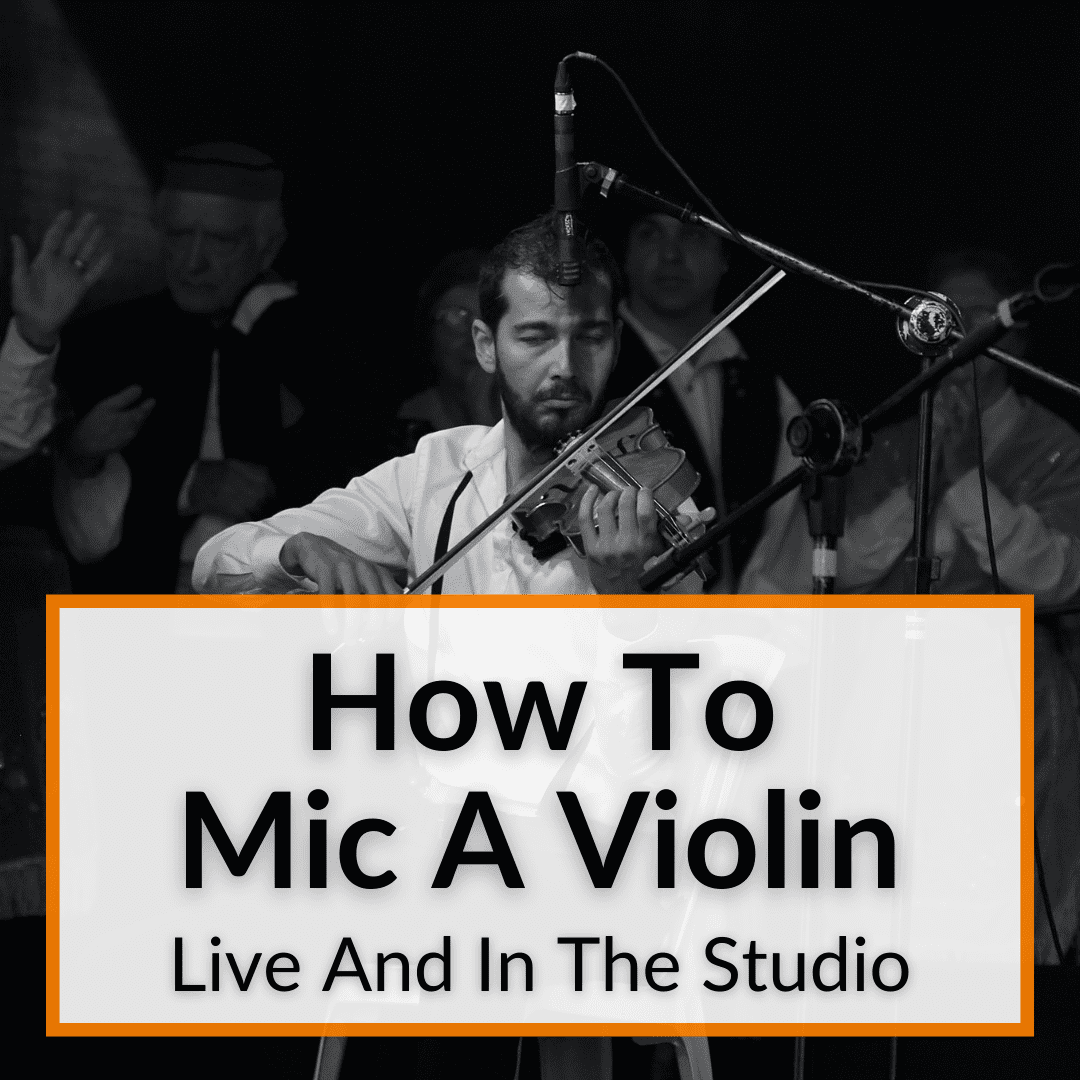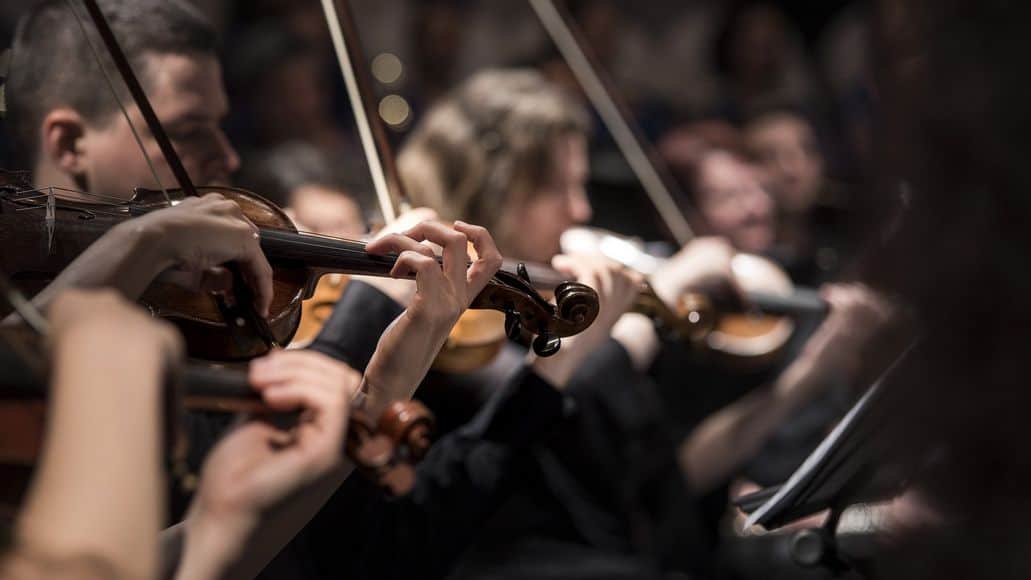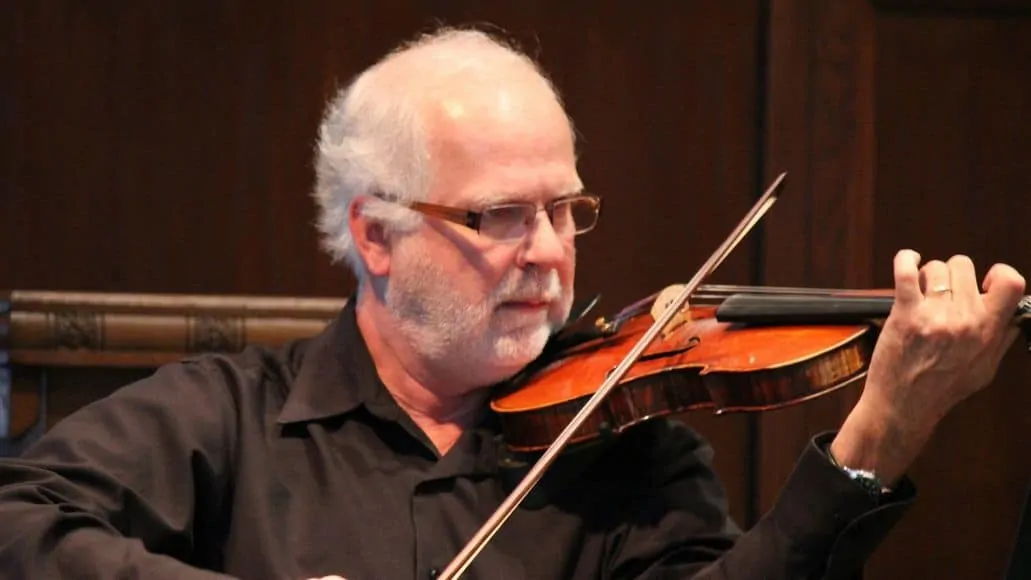 Miking instruments well is an art.
Miking instruments well is an art.
And the violin is no exception.
In fact, it is probably one of the harder instruments to get right.
Every situation is different and calls for a slightly different mic setup.
But there are some general guidelines to follow and some setups that tend to work well in many situations.
Keep reading to learn how to mic a violin, be it in a live setting or in the studio.
Table of Contents
How To Mic A Violin (Live And In The Studio)
In principle, there is no single technique to capture the violin, the same as with any other instrument.
The capture needs and the sound you need from the instrument will vary depending on the song, the arrangement, and the role played by the violin within the global array.
Another thing to keep in mind is that the sound of the violin, like any other acoustic instrument, will depend largely on the acoustic space in which you record (without taking into account the musician, their vibrato technique, the bow, the musician’s technique with the bow, the strings, etc.).
You must also take into account that the violin, like other acoustic instruments, does not have the same emission pattern for all frequencies. It differs in both in the vertical and horizontal planes.
The first step to properly miking a violin is to have a thorough understanding of the instrument and the way it works to produce sound.
Understanding The Violin And How It Works
A separate violin on its own requires different miking than a string section. This is due to the conjunction of resulting harmonics.
For ensembles, it is better to take it by sections instead of taking the instruments individually. To do this, use omnidirectional microphones.
The violin consists of about 35 pieces that, by properly rubbing a bow across the strings, communicate vibrations to its structure and the air enclosed in it.
The acoustic box is made with two different kinds of wood for both the upper and lower plates, with their respective treatments and differences in thickness across its surface.
The lower one is usually maple, and the upper one is usually red spruce. A groove is made on each plate where a strip of pear or white poplar wood (the fillet) is inserted.
The harmonic bar rests on the inner part of the upper plate, passing through the point where (on the outer side) it rests on the bridge closest to the lowest string.
Finally, inside the case is the soul of the violin, which consists of a wooden cylinder that joins the two plates, and is held by the force of the strings on the bridge.
The timbre and the absence of it sounding like a guitar will depend on its position. The top plate features 80, 147, and 304Hz modes, respectively, while the bottom features (in the same order as those on the top) 116, 167, and 349Hz modes.
These contributions to the coloration in the low frequencies are softer, the better the instrument. We have an entire article on how the violin makes sound, if you want to know more. For now, let’s move on to mic positioning.
Microphone Positioning Recommendations
Now let’s look at the microphone positioning for a live setting and then do the same for a studio setting.
How To Mic A Violin Live
In a take of an individual violin, you will have parasitic noises both from the musician (movement, friction, and breathing) and from the parts of the instrument and the bow.
This means that the close-up shot with an omnidirectional microphone can be a bit dirty. You will have the richest and roundest timbres in the direction of the box.
Towards the strings, the sound will be brighter and more defined. Distances around the order of 40 to 60 cm usually give very good results.
Contact microphones on the bridge or miniature microphones in the same place are also often used (the latter provides a better response).
These types of shots often benefit from being combined with a room shot. Good microphone choices are the Neumann U87 and 86, the 4021 DPA, the AKG C414 and C451 (and their 418 miniatures), the Sennheiser MD441 and the Schoeps CMC541.
How To Mic A Violin In The Studio
The optimal pick-up point on a violin is found just in front of the musician and above them (this is the point where a better balance of all the frequencies emitted by the violin occurs) and with the microphone pointing to the body of the instrument.
But you must also take the musical style into account, since a violin in a country (“fiddle”) or rock theme does not sound the same as one in a classical piece.
For the first case, the violin is usually miked from a smaller distance (between 15 cm and 1 meter may be enough, although sometimes it is necessary to increase that distance).
A ribbon microphone might give the best results and reduce, to a certain extent, the aggressiveness of the sound (microphones such as the Beyerdynamic M160 and also the m260DX with RCA capsule, as well as sometimes the Royer R121, are good options).
In these cases, it is also often interesting to pick up the violin with a “pickup” through a guitar amplifier (two excellent amplifiers for this are the Peavey Delta Blues with a 15″ cone, and a Groove tubes combo).
Amplifying The Sound
For situations that require a more natural sound, it is better to use the microphone at a greater distance (from half a meter to 3 meters, approximately, and depending on the sound/definition you are looking for since in this way all the “elements” of the sound of the violin will integrate better).
In this case, microphones with a small-diaphragm condenser and with a nickel capsule will do the trick, like the Neumann KM54/254 and the Gefell MV692 with M94 capsule.
Or without nickel capsule, the Neumann KM84 and KM86. Other microphones that are great for miking the violin are the Gefell UM921S and the Neumann U67.
Preamps
When it comes to violin mic preamps, you can use transformerless preamps, as transparent as possible, and with as low a background noise level as possible. But in rock contexts, the Neve 1064/1073 and the Siemens V276 have shown good results.
Miking A Violin: Final Thoughts
As mentioned, the choice of microphone is the starting point to achieving the desired sound. There is not just one single correct technique for each case. It varies a lot.
The experience and creativity of whoever takes the shot is as important as the knowledge of the microphone to use. And the most expensive mic is not necessarily going to be the ideal one.
In turn, knowing the instrument in all its aspects will provide you with important information: what type of microphone to use, where to place it, and (something really important and not always taken into account) the performance of the musician.
And finally, we need to mention electric violins. These use amplifiers like electric guitars to amplify the sound, which removes the need for a microphone. Read “How Does An Electric Violin Work?” to learn more about them.





Leave a Reply